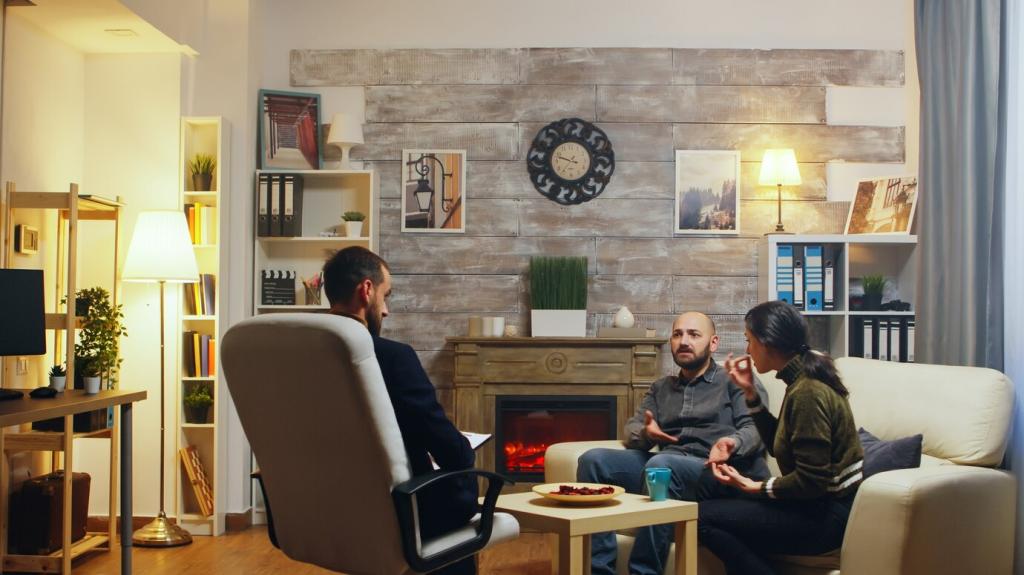Sustainable Storage: Eco‑Friendly Organizing Solutions
Today’s featured theme is “Sustainable Storage: Eco‑Friendly Organizing Solutions.” Step into a calmer, greener home where every shelf, bin, and label supports the planet—and your peace of mind. Share your goals, subscribe for weekly eco tips, and let’s organize sustainably together.

Foundations of Sustainable Storage
Choosing earth‑conscious materials
Prioritize durable, low‑tox materials like glass, stainless steel, bamboo, cork, and reclaimed wood. Avoid brittle plastics with unknown additives. Seek recycled content, repairable hardware, and locally sourced pieces that minimize transport emissions while maximizing lifespan and everyday usefulness.
Lifecycle thinking for every bin and basket
Before buying, imagine how an item will be used, repaired, loaned, and eventually recycled. Can parts be replaced? Is it easy to clean? Modular designs and honest materials make maintenance simple, while end‑of‑life disassembly keeps components out of landfills.
Start small: low‑waste wins in a single afternoon
Wash and relabel glass jars for pantry staples, reuse shoe boxes as drawer dividers, and corral cables with paper ties. Audit containers you already own before purchasing anything new. Share your quick wins below to inspire fellow readers on their sustainable journey.

Kitchen: a refill‑friendly pantry
Decant dry goods into clear glass jars with erasable labels, then shop bulk or refill stations to cut packaging waste. Use stackable bins made from recycled plastic or metal. Keep a storage map inside a cabinet door so everyone can easily maintain the system.

Closet: mindful wardrobes that breathe
Organize by frequency and season using secondhand baskets, cedar blocks, and low‑impact hangers. Create a donation zone with a cloth bag for ongoing edits. Repair kits in a small tin encourage mending before buying new, protecting budgets and the planet simultaneously.
Crates to shelves with character
Sand and seal old fruit crates with plant‑based finishes, then stack or wall‑mount them for modular shelving. The patina adds warmth while saving lumber. Add felt pads or brackets for stability, and label each cube for rotating seasonal items without chaos.
Denim pockets become wall organizers
Cut back pockets from retired jeans, stitch them onto a fabric panel, and hang on a dowel. Store mail, notebooks, or craft tools while preserving memories. This lightweight organizer reduces clutter, looks charming, and keeps countless small items from disappearing in drawers.
Tin can to magnetic spice caddies
Clean food tins, remove labels, and paint with non‑toxic enamel. Attach magnets and stick them to a metal strip inside a cabinet door. Refillable spices save packaging, and the vertical layout frees shelf space while keeping flavors at your fingertips every day.
Buying Better: Certifications and Smarter Choices
01
Decoding eco labels with confidence
Look for FSC or PEFC for responsible wood, GOTS for organic textiles, and Cradle to Cradle for circular design. Greenguard or Blue Angel can indicate low emissions or recycled content. Verify authenticity on official databases to avoid greenwashing and misleading claims.
02
Choose longevity over trends
Neutral colors, classic shapes, and modular parts outlast fads. Select pieces you can repair, not replace. A timeless glass jar beats novelty containers that crack. Keep receipts and care instructions together so maintaining your storage investment is straightforward for years to come.
03
Secondhand first, always
Check thrift stores, buy‑nothing groups, and office surplus before purchasing new. Often you’ll find metal racks, file boxes, or sturdy jars awaiting a second life. Share your best secondhand score in the comments to inspire the community and reduce demand for new goods.
Habits, Maintenance, and Low‑Waste Decluttering
Use chalk markers, pencil tags, or clip‑on labels for easy category changes without new materials. Flexible labeling preserves containers through life transitions—new hobbies, kids, or roommates—so your organizing stays relevant and waste stays minimal over time.
Stories from Sustainable Spaces
Maya replaced plastic bins with two reclaimed shelves and twenty mismatched glass jars from neighbors. A simple map inside a cabinet door ended constant searching. She says the quiet clink of jars feels like a ritual, reminding her to buy only what she’ll use.
Stories from Sustainable Spaces
A wall of salvaged pegboard, labeled coffee tins for screws, and color‑coded canvas totes tamed tools and toys. Repairs happen faster because everything is visible. The kids love returning gear to its painted outlines, turning clean‑up into a game instead of a chore.
